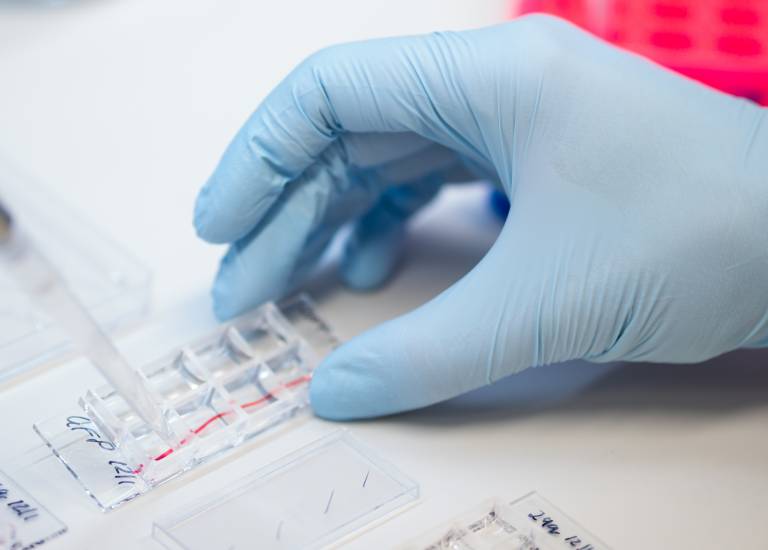Landmark review about disease-modifying therapies in Huntington’s disease published
17 June 2022
A new review led by Prof Tabrizi outlines the latest evidence about disease-modifying therapies for Huntington’s disease has been published in the Lancet Neurology.

A team of international experts in the field of Huntington’s disease, led by Prof Tabrizi, head of the Huntington’s Disease Centre at the UCL Queen Square Institute of Neurology, provide a comprehensive review of clinical trials in the Huntington’s disease field.
Huntington’s disease is the most common autosomal dominant neurodegenerative condition. Decades of research have identified the main pathogenic mechanisms associated with the disease-causing mutation in the Huntingtin (HTT) gene. However, numerous trials targeting downstream effects of the mutation have provided negative results. In contrast, newer therapies in development target the disease at its core even being able to decrease the concentrations of the huntingtin protein in Huntington’s disease patients.
Tominersen, F. Hoffman-La Roche’s non-allele selective antisense oligonucleotide targeting the HTT messenger RNA, showed decreases in the concentrations of the mutant huntingtin protein in a phase 1/2 study. However, the phase 3 efficacy and long-term safety study with tominersen failed to show clinical benefit, possibly as a consequence of the high doses and relatively late stages of the treated participants. Planning is now underway to test the drug in a new trial with younger, less affected patients treated with lower doses.
In contrast, gene therapy uses genes (transgenes) that encode for a therapeutic drug. These principles frequently need to be inserted inside a modified virus prior to be administered into the brain. An intracranially administered transgene encoding for a microRNA that blocks the expression of the toxic protein has shown excellent results in animal models and is currently being tested in Huntington’s disease patients during a phase 1/2 clinical trial.
Similarly, small molecules as branaplam and PTC518 decrease the concentrations of the Huntingtin protein through interfering with the process of maturation of the messenger RNA. These therapies can be administered orally and are already being tested in patients with Huntington’s.
Other treatments targeting HTT DNA such as CRISPR-Cas9 and Zing-Finger Proteins; as well as therapies targeting somatic instability have shown good results in animal models but still need further validation prior to progressing up to clinical stages of development.
Changing the course of the disease is more likely by treating patients with very few symptoms, or even when asymptomatic. Therefore, biofluid or imaging biomarkers could show benefit at stages where the performance of clinical scales is still suboptimal.
Although recent Huntington’s disease clinical trials have provided disappointing results, the recent and significant expansion of therapeutic approaches in pre-clinical and clinical development being deployed in academic research, small Biotechs and major industry players are a cause for hope.
Links:
- Tabrizi et al. Potential disease-modifying therapies for Huntington’s disease: lessons learned and future opportunities. Lancet Neurology 21 (7), P645-658. available online 15th June 2022.
- Saft, C. Huntington's disease: disappointments and new beginnings. Lancet Neurology 21 (7), P582-584. Available online 15th June 2022.
- Professor Sarah Tabrizi's academic profile
- Huntington’s Disease Centre, UCL Queen Square Institute of Neurology
 Close
Close

